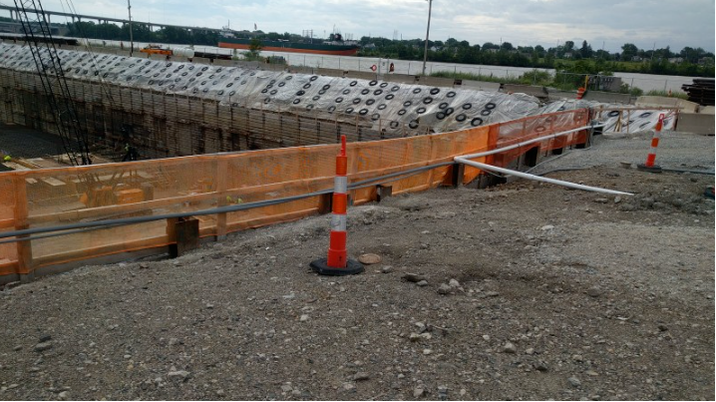Just How Consulting Engineers Enhance Geotechnical Design Projects: Insights Into Their Expertise, Methods, and Collaborative Approaches
Consulting engineers are critical in enhancing geotechnical design jobs, using their specialized knowledge to browse the intricacies of subsurface problems. Their collective strategies foster communication among varied project stakeholders, inevitably shaping the job's trajectory.
Role of Consulting Engineers
The knowledge of getting in touch with engineers in geotechnical design is basic to the successful implementation of building and construction tasks. These professionals play a critical role in assessing soil and rock residential properties, which are vital variables influencing layout and building choices. By conducting detailed site examinations, speaking with designers accumulate essential data that notifies the design process, ensuring projects are developed on stable and appropriate ground.
Consulting engineers also supply indispensable understandings into threat administration (geotechnical geologist). They recognize potential geotechnical threats, such as landslides, dirt liquefaction, and negotiation concerns, enabling stakeholders to apply efficient reduction techniques. Their proficiency aids in optimizing structure designs, which can result in substantial cost savings and boosted security
Additionally, speaking with designers act as an essential web link between project proprietors, architects, and contractors. Their capacity to translate complex geotechnical information into workable referrals promotes cooperation and promotes informed decision-making throughout the job lifecycle. This multidisciplinary strategy not just boosts project effectiveness yet additionally guarantees compliance with regulative requirements and finest techniques.
Key Methods in Geotechnical Design

One main methodology is site investigation, which entails carrying out field examinations and laboratory analyses to gather data on subsurface problems. Strategies such as Requirement Infiltration Testing (SPT) and Cone Infiltration Testing (CPT) are extensively used to evaluate dirt stratigraphy and stamina. Furthermore, geophysical techniques, consisting of seismic and electrical resistivity studies, provide non-invasive methods to assess subsurface characteristics.
Another crucial approach is numerical modeling, which enables engineers to simulate various scenarios and predict just how soil-structure communications will certainly act under different loading conditions. Finite Component Evaluation (FEA) is an usual technique utilized in this context.
Furthermore, the design of foundations, preserving frameworks, and earthworks depends heavily on these approaches - geotechnical geologist. By integrating innovative logical tools with field information, getting in touch with designers can develop customized options that attend to particular project challenges, inevitably adding to the stability and safety and security of building and construction jobs
Significance of Soil Evaluation
Dirt analysis acts as a foundational component in geotechnical engineering, giving necessary insights right into the physical and chemical residential properties of soil essential for effective building and click site construction planning. Recognizing soil attributes is essential for establishing its load-bearing capacity, drain actions, and potential for negotiation or instability. Thorough soil examinations, consisting of sampling and lab screening, help determine criteria such as soil type, dampness web content, density, and shear stamina.
These evaluations inform the choice of ideal construction methods and products, inevitably influencing job safety and security and long life. Natural dirts might call for various structure designs compared to granular soils, necessitating tailored engineering options. Dirt evaluation help in recognizing impurities that can posture threats to human wellness or the setting, permitting for the growth of reduction approaches.
Including dirt evaluation right into the very early phases of job advancement helps to reduce unexpected check my site challenges, ensuring that engineers can anticipate and resolve possible concerns before they intensify. By establishing an extensive understanding of the site conditions, speaking with engineers can optimize layout effectiveness and decrease costs, therefore improving the general success of geotechnical engineering tasks.
Collective Methods in Tasks
Effective geotechnical jobs typically depend upon collaborative strategies that unite diverse knowledge from various techniques. Efficient collaboration amongst speaking with designers, rock hounds, ecological researchers, and building professionals is crucial for addressing intricate difficulties and enhancing task results. By leveraging the one-of-a-kind skills and expertise of each team participant, jobs can take advantage of a holistic understanding of the website conditions, governing requirements, and design constraints.
Routine communication and interdisciplinary conferences facilitate the sharing of insights and cultivate a culture of team effort. These joint initiatives make it possible for the recognition of potential dangers early in the job lifecycle, permitting prompt mitigation approaches. Furthermore, including feedback from stakeholders, including regional areas and regulatory agencies, makes sure that all viewpoints are considered, enhancing job approval and conformity.
Furthermore, the assimilation of innovative technologies, such as Geographic Information Systems (GIS) and Building Information Modeling (BIM), further improves partnership. These tools permit the real-time sharing of data and visualization of geotechnical conditions, promoting informed decision-making. Ultimately, a collaborative technique not only enhances job execution however also lays the foundation for innovative services to complex geotechnical engineering challenges.
Influence On Project End Results

Consulting designers employ innovative approaches such as threat assessment and anticipating modeling, which boost the accuracy of task forecasts. Their capability to incorporate innovative modern technologies, like geotechnical instrumentation and data analytics, additionally refines the style and building and construction processes. Because of this, tasks experience enhanced performance, reduced costs, and decreased delays.
Additionally, cultivating effective communication and cooperation amongst employee boosts problem-solving abilities. When difficulties arise, an unified front permits speedy identification of services, stopping possible setbacks. Ultimately, the collective initiatives of getting in touch with engineers add to better results, making sure that jobs satisfy both governing criteria and client expectations.
Conclusion
